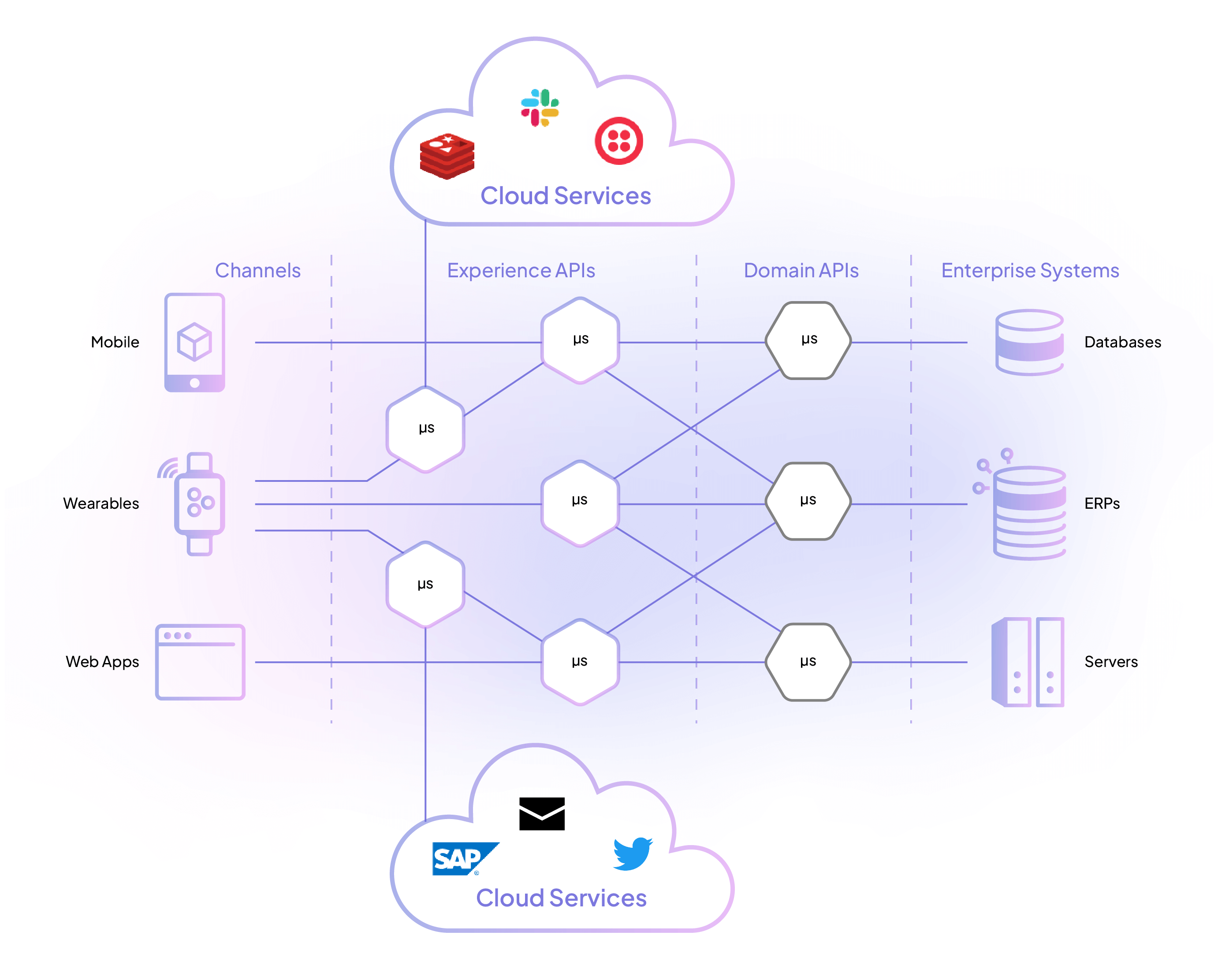Choreo for API Management

- Amila De Silva
- Software Architect - WSO2

In today's rapidly evolving digital landscape, organizations are under constant pressure to innovate and stay ahead of the competition. To achieve this, businesses are turning to digitization strategies that enable faster innovation and rapid response to market changes. One such strategy that has garnered significant attention is the API-first approach. This strategy has become popular due to the rise of microservices architecture. It requires a change in enterprise architecture and culture, as businesses must think of their core offerings as APIs and build an independent, yet cohesive ecosystem using APIs. In this article, we will explore the benefits of adopting an API-first approach, why it is necessary, and the technical framework required to enable it.
Benefits of an API-First Strategy
The benefits of adopting an API-first approach are numerous.
- Executing digital transformation in an API-centric way offers faster innovation, as new products can be created by composing core APIs. Making changes to existing applications/products can be done swiftly as it's just a matter of changing the API.
- Increased developer productivity as capabilities are delivered as APIs, and changes are made in isolated areas of an enterprise system. It's easier to understand the change, implement it, and roll out the change than it is to change a tangled, bulky monolithic system.
- Interoperability is another advantage of going API-first as APIs are designed with reuse in mind. Open standards/specifications like REST and GraphQL are used, enabling the usage of the API, regardless of the language it's written in. APIs are written to a proper standard to help gather consumers over time.

Figure 1: Organizing APIs into layers promotes agility and robustness
Due to these benefits, adopting an API-first strategy gives organizations a clear edge over its competition. Conversely, businesses may be at a disadvantage if they undertake its digital transformation in a non-API-centric way.
- When different business functions or capabilities aren't segregated properly into modular units, the resulting system can be interconnected and brittle - changes made in one part of the system might break something else.
- Adding developers may not proportionately increase the productivity or speed of development since components in the enterprise are interconnected. Developers must communicate more often and coordinate rolling out their changes to avoid catastrophic downtimes and unpleasant incidents. Understanding the system would be more challenging, and giving autonomy to developers will be difficult.
Therefore, we feel that adopting an API-First strategy will be a necessity, and not an option for organizations.
Technical Capabilities Needed to Execute an API-First Strategy
While adopting an API-first approach is a change that occurs within a business, several technical capabilities are necessary for this transition to take place.
- A Platform to Design, Create, Expose, and Manage APIs
Most organizations build APIs using their own tools and processes, then purchase/install an API management solution to manage those APIs. To really benefit from being an API-first enterprise, API management should be built into the environment/platform on which APIs are being built as that will enable organizations to appropriately design and govern APIs. This approach helps to reuse data types and avoids rework. It also allows for proper sandboxing and provides a lot more benefits compared to regular API management.
- The Ability to Share and Reuse APIs
Internal developers and external consumers should be able to discover APIs easily. Often, development teams spend time creating utility services that are already in use. To prevent such duplication, developers should be able to find APIs that are already in the organization's catalog. Having a central place to publish and discover APIs increases its adoption. Developer portals and enterprise marketplaces help cater to this requirement by cataloging enterprise APIs and third-party APIs. Public API documents, samples, and try-out tools help developers get on board with APIs quickly.
- Hide Complexities of Deployment and Runtime from Development Teams
Implementing a successful API-first strategy involves creating autonomous, multidisciplinary development teams responsible for developing and taking the API to production. While deployment becomes part of the development team's responsibility, when the deployment's complexity is encapsulated through a developer-friendly abstraction, teams get more comfortable pushing their changes to production. The need may arise to host APIs across regions and different clouds. Underlying tools should make this task no harder than triggering a pipeline to deploy the API to another environment.
- Insights and Intelligence
Knowing what’s working and how well it’s working is critical. Knowing what isn’t working and why is equally important. Getting ideas for future developments/roadmaps are necessary. An API-first approach enables enterprises to gain insights into how APIs are being used, what needs improvement, and what new APIs are necessary. Analytics tools and monitoring solutions play a vital role in gathering and analyzing API data.
- Security, Access Control, and Surveillance
Authentication and authorization, rate limiting and throttling, API discovery, connectivity graphs, and usage limits are essential components of a secure and robust API-first enterprise.
These requirements are diverse and span across different technical domains. Finding the correct set of tools and configuring them to work coherently requires expertise a typical enterprise will struggle to find.
This is where platforms like Choreo for API Management can help.
What Choreo Offers
Choreo is a platform designed to help organizations become API-first enterprises. It offers a comprehensive set of capabilities that enable organizations to design, develop, and manage APIs securely and at scale. Check out Choreo for API Management today and take the first step in transforming your enterprise into an API-first organization.
